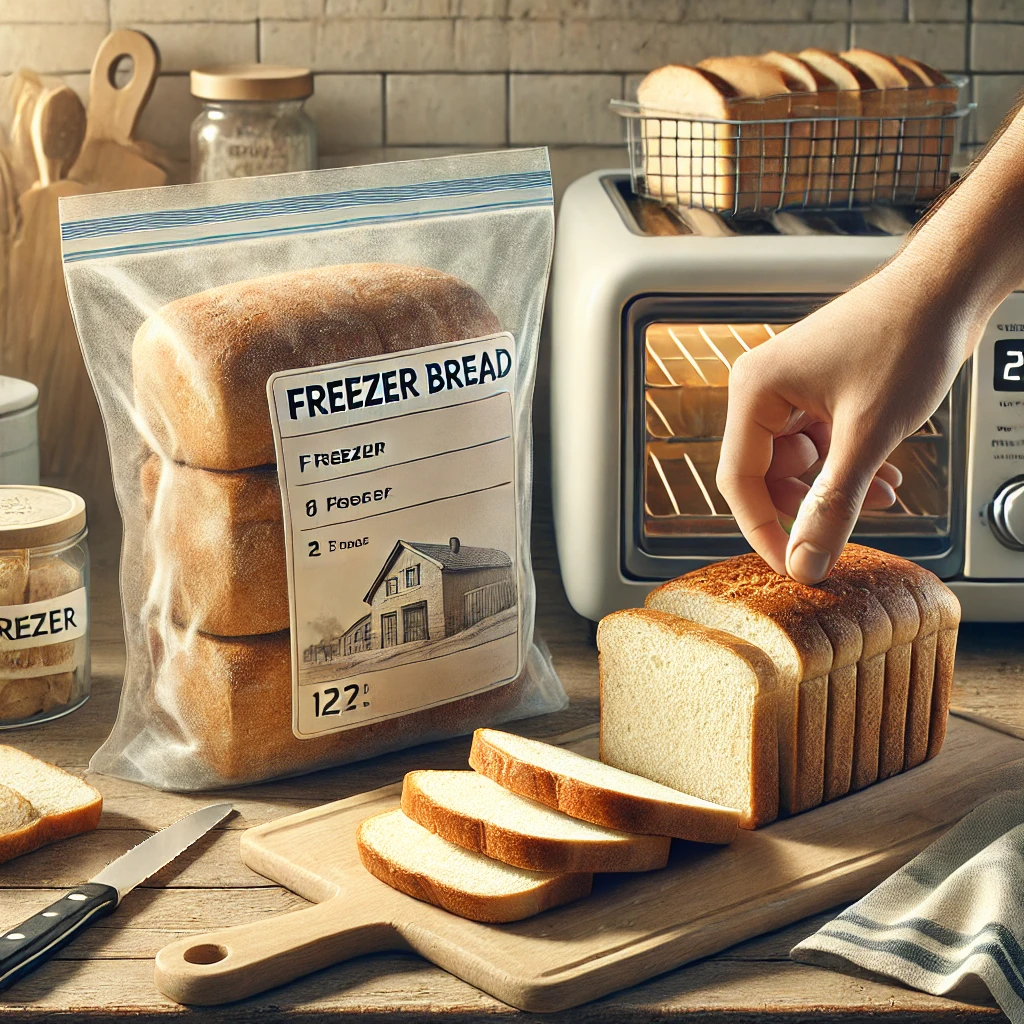Freshly baked bread is one of life’s simplest pleasures—but if you’ve baked more than you can eat in a few days, knowing how to store it correctly is key. Freezing and reheating bread properly ensures you can enjoy homemade flavor and texture long after baking day.
In this article, you’ll learn the best techniques for freezing whole loaves, sliced bread, and rolls, as well as how to reheat them so they taste like they just came out of the oven.
1. Why Freeze Homemade Bread?
Freezing is the best way to preserve the flavor, texture, and moisture of homemade bread without adding preservatives.
Benefits:
- Prevents mold and staling
- Saves time—bake in bulk, enjoy later
- Easy to portion and reheat as needed
- Minimizes food waste
Properly frozen bread can last up to 3 months and still taste fantastic.
2. When to Freeze Bread
Best time to freeze:
After the bread has fully cooled from baking.
Freezing while still warm creates condensation, which leads to soggy bread and freezer burn.
Let the bread rest on a wire rack for at least 1–2 hours before freezing.
3. How to Freeze Bread: Step by Step
Option A: Freezing a Whole Loaf
- Wrap the loaf tightly in plastic wrap or foil.
- Place in a freezer-safe bag and remove excess air.
- Label with the date.
Option B: Freezing Slices
- Slice the bread after cooling.
- Separate slices with parchment paper (optional).
- Stack and wrap in plastic wrap or foil.
- Store in a zip-top freezer bag.
Why slice before freezing? It’s easier to pull out exactly what you need—great for toast, sandwiches, or quick snacks.
4. Tips for Best Freezer Storage
- Use double layers (wrap + bag) to prevent freezer burn.
- Store near the back of the freezer, where temperature is more stable.
- Label your bread with the type and date.
- Avoid storing bread near strong-smelling foods (it can absorb odors).
5. How to Reheat Frozen Bread
The best method depends on whether you’re reheating a whole loaf or just a slice.
Whole loaf (from frozen):
- Preheat oven to 350°F (175°C)
- Remove all packaging and place the loaf on a baking sheet
- Bake for 20–30 minutes
- Let rest for 5–10 minutes before slicing
This method brings back the crust and warms the inside without drying it out.
Sliced bread:
- Toast from frozen (no need to thaw)
- Or microwave for 15–20 seconds per slice if you prefer soft texture
- For extra crisp, warm slices in a skillet or toaster oven
Rolls or buns:
- Wrap in foil and warm in the oven at 325°F (160°C) for 10–15 minutes
- Or microwave in a towel for 30 seconds for softness
6. Avoid These Common Mistakes
- Don’t freeze bread with high moisture fillings (like stuffed bread with cheese or sauce) unless you plan to reheat thoroughly in the oven.
- Don’t thaw bread in the fridge—it often makes it go stale faster. Room temp or direct reheat is better.
- Don’t refreeze bread after thawing—it loses texture and flavor.
7. Bonus: Pre-Slicing for Meal Prep
If you regularly eat toast, sandwiches, or garlic bread, slice and freeze a fresh loaf right away. Pull out what you need, and toast from frozen—it saves time and keeps bread tasting great.
Ideas:
- Toasted sandwich bread ready to go
- Garlic bread slices for pasta nights
- French toast prep (just thaw and soak)
Final Thoughts
With just a few simple steps, you can extend the life of your homemade bread and enjoy it whenever you like—without sacrificing taste or texture.
Freezing and reheating bread the right way turns your kitchen into a mini bakery on demand, helping you make the most of every loaf you bake.
